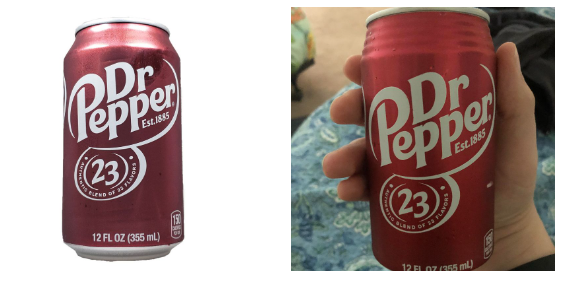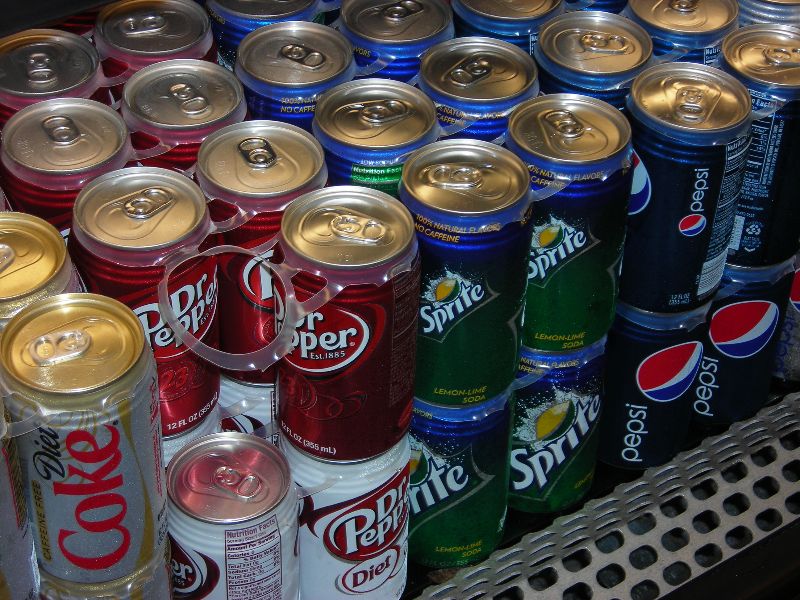Why Soda Cans in Hawaii Look So Weird

Pictured above are two cans of Dr Pepper. The one on the left comes from some beverage reseller’s website, here, while the one on the right comes from a reddit thread, here. The products are identical, at least on the inside of the can; both cans contain 12 fluid ounces (355 mL) of Dr Pepper. But the outside? Definitely not. The one on right has ridges as you approach the top of the can; the one on the left is smooth. If you were around in the late 1980s, maybe this isn’t all that interesting to you; the ridged can, you’d assume, is just old — for a few years during that decade, most soda cans in the United States looked like that. But that’s not actually what’s going on here, as evidenced by the fact that Dr Pepper has gone through a few brand refreshes since the 1980s. Nope, the can on the right is something you can purchase today.
You just need to take a flight to Hawaii first.
Oh, and it’s not just Dr Pepper. Almost all soda cans (and beer cans, for that matter) in the state use this ridged can design, as seen below (via here). And it has nothing to do with volcanos, luaus, leis, or anything else stereotypically Hawaiian. The issue? transportation.

Soda cans are made of aluminum and, while we may take aluminum for granted, bottlers and drink makers do not. The cost of the metal is a significant percentage of the overall cost of the product, and therefore, these companies have an incentive to use as little aluminum as possible. And, as it turns out, the lid and the base need to be thicker than the rest of the cylinder.
As noted above, the ridged cans were everywhere in the United States starting in 1987 and 1988. For the decades before then, cans had a larger diameter — 2 and 11/16th inches across, and became known across the bottling industry as the “211” model. These ridged cans, known as “206s,” weren’t as wide — they only measured 2 and 3/8th inches across. (For those who didn’t see the math immediately, that’s the same as 2 and 6/16th.) For the bottlers, this was a win — consumers got the same product, but it cost the manufacturers a little bit less per unit. Soda and beer sales are a volume business, so all those little bits add up to big savings.
The 206s didn’t last very long, though — at least, not in most places. The bottling industry continued to innovate and according to Industrial Physics, the 202 — 2 and 1/8th inch-diameter cans — became the standard starting in 1991. Bottling plants everywhere began converting over to the small-diameter cans. The 206s had ridges in to reinforce the can where needed; the 202s, though, had no need.
And that should have been the end of the 206s, except for one problem. Getting the soda syrup to the bottling plant is easy if you’re in the continental United States — you just put it on a truck. But Hawaii, as you probably know without needing a map, is pretty far from, well, everything, and there’s a lot of water in the way, so no trucks can get there. It doesn’t make a lot of sense to ship already-canned drinks to Hawaii; it’s cheaper to send the liquid or produce it locally. And therefore, it also makes a lot more sense to bottle it locally.
There’s only one major canning facility — owned by the Ball Company (you probably know them from their mason jars) — on the Hawaiian islands. And it’s tiny compared to most other ones; as the Honolulu Star-Bulletin reported in 2008, “one million cans are manufactured each day for isle soda, juice and beer distributors” at the factory, making it Ball’s smallest. By comparison, per the Star-Bulletin, the company’s “largest plant, located in New York, is nearly twice the size and makes 9 million cans a day.” At that relatively low volume, it wasn’t cost-effective for the bottler to change all of its equipment over to the 202 cans.
So, they never did. Even today, Hawaii — uniquely in the United States — is home to the ridged, 206 cans.
Bonus fact: You’ll note above that there’s no period in “Dr Pepper,” despite the fact that the “Dr” is pronounced “doctor,” and the abbreviation for that word almost always has a period after it (at least in the United States, where Dr Pepper is from). The reason for the missing dot? It was removed to make the name easier to read. As Nexstar Media Wire reports, the company “says the period was dropped in the 1950s to make it easier to read on the smaller bottles of the time.”
From the Archives: Mice Cold Soda: He claimed he found a dead mouse in his can of Mountain Dew. The science suggested otherwise — and the reality may have been even grosser.
